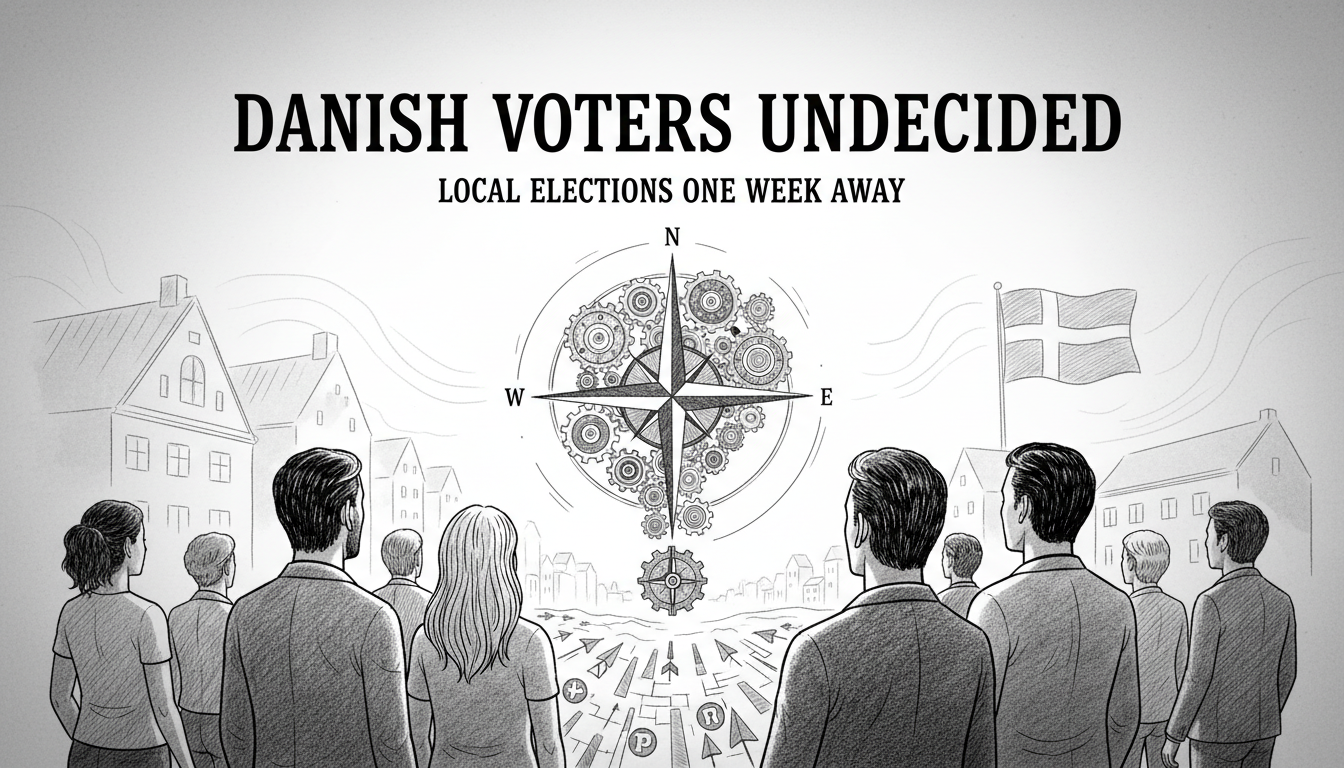With just one week remaining until Denmark's municipal elections, nearly half of voters remain undecided about their choices. New research reveals that Danish voters are increasingly mobile and making their decisions later than ever before.
A comprehensive study conducted after the previous local elections shows that 42 percent of voters made their final decision during the last week before election day. An additional 14 percent waited until the actual voting day to determine their choice. These numbers have been steadily increasing over the past four municipal election cycles.
Political science professor Ulrik Kjær, who contributed to the research, explains that modern voters have become more fickle in their political affiliations. "Today, many voters shop around and test the waters thoroughly before making a decision," he stated. The study surveyed over 4,000 voters about their voting patterns and decision timelines.
Young voters between 18 and 34 demonstrate the highest levels of uncertainty. Among this demographic, 62 percent make their final voting decision during the last week before elections. Professor Kjær attributes this trend to younger voters having fewer years of established voting patterns compared to older generations.
"Young people are extremely uncertain, which means there are many young votes available for candidates during the campaign," he noted.
The research highlights that personal votes carry much greater weight in municipal elections compared to national elections. Voters consistently mention that candidates' political priorities and positions on local issues matter most when making their choices.
Political editor Hans Redder emphasizes that modern voters show far less attachment to individual parties than they did just ten years ago. "Voters are extremely mobile and shift allegiances very quickly," he observed. "We've seen examples of this in recent elections where parties gained or lost substantial support within weeks."
This volatility makes municipal elections both exciting and unpredictable. Unlike parliamentary elections, municipal contests face the additional uncertainty of voter turnout. Many voters remain undecided about whether they will vote at all, creating extra pressure for candidates to campaign until the final moment.
The 2021 municipal elections saw a 67.2 percent participation rate, significantly lower than the 84.1 percent turnout in the 2022 parliamentary elections. This turnout gap underscores the different dynamics between local and national political engagement in Denmark.
Local elections in Denmark focus on municipal and regional governance, covering essential services like schools, elderly care, and local infrastructure. The decentralized nature of these elections means voters often prioritize individual candidates over party platforms, creating unique campaign dynamics where personal connections and local issue expertise can outweigh traditional party loyalty.
With such high numbers of undecided voters, political parties and candidates continue to campaign intensely during these final days. The outcome remains genuinely uncertain as Danish voters weigh their options and consider which candidates best represent their local community interests.

